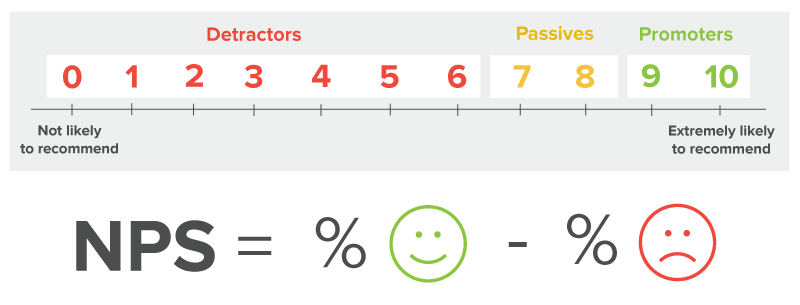The Holy Grail …
We’ve all experienced it, good and bad. We’ve all talked about it (especially when it was bad). Customer satisfaction, where it begins and where it ends. Not just because ultimately our customers pay our bills, and pay for us, but because it’s absolutely and fundamentally obvious – if we treat our customers well, look after them, show them respect, admit when we’re wrong (and make suitable amends), and go to extraordinary lengths to deliver brilliant customer service, they will stay with us (even if things don’t always go to plan) and keep dealing with us.
Because this is so obvious, everybody (or nearly everybody) says that it is their top business priority. But if that’s the case, why do so many companies get it wrong so much of the time? At first glance it seems a big, complex question demanding a big, complex answer – and, sure, it’s not always straightforward – but it seems to us to come down to just two things:
- the culture of the company (IBM used to have a mantra about “delighting the customer”. which always struck a chord with me!)
- the way that the culture is implemented
Of course, saying that you want to deliver customer satisfaction and embedding it in the culture are two different things; and even if that’s achieved, is the business operationally geared up for that delivery? And here’s the problem!
In my personal experience, of all the companies I’ve ever dealt with, personally and professionally, one stands out a mile for delivering brilliant service. I was once fortunate enough to meet their Director of Customer Service, when I gave him the positive feedback and asked him how they did it. His reply: “We give everyone who interacts with customers the ability to make decisions”. That was it! Interesting, isn’t it? I’m not saying that this is the answer for everyone, but it is a brilliant demonstration of how to embed the culture of superb customer satisfaction operationally.
So how can everyone find the Holy Grail (or at least get close)?
Well, first of all we have to know what our customers think of us, by asking them what we’re good at and where we need to improve. We then have to make those improvements, and ask them again. And keep improving, and keep asking, over and over again. And don’t just focus on improving what we’re not so good at – look to improve what we’re already good at (i.e. go from “good to great”), and see the difference!
There’s an interesting (and much discussed) quote by H. James Harrington which goes:
“Measurement is the first step that leads to control and eventually to improvement. If you can’t measure something, you can’t understand it. If you can’t understand it, you can’t control it. If you can’t control it, you can’t improve it.”
We can argue all day with his central tenet, but what we probably wouldn’t disagree with is the simple fact that we can only KNOW that we’ve improved if we KNOW our starting position. And that means that we have to measure it, somehow. And that’s where the Net Promoter Score or NPS comes in.
What is NPS and how does it work?
NPS is an index that measures the willingness of customers to recommend a company’s products or services to others. Part of its wide appeal is its simplicity – it asks just one question:
“On a scale of 0 to 10, how likely are you to recommend this company’s product or service to a friend or colleague?”
and then divides the responders into three categories: detractors, passives, and promoters.

Detractors score from 0 to 6, and are clearly not happy. They will not make a positive recommendation and in all probability will make a negative one!

Passives score 7 or 8. They are broadly neutral. They probably wouldn’t say anything negative, but aren’t enthusiastic enough to say anything positive either.

Promoters, who score 9 or 10, are positive and enthusiastic about the company’s products and services, and will make positive recommendations to other potential buyers, often proactively.
The NPS score is calculated by subtracting the percentage of customers who are detractors from the percentage who are promoters, thus arriving at a score between -100 and 100.
What does it tell us?
An awful lot, actually! The Temkin Group has found that “compared to detractors, promoters are almost six times as likely to forgive, are more than five times as likely to repurchase, and are more than twice as likely as detractors to actually recommend a company.” (Click here for details on how you can access the full report).
On the flip side, a detractor can and often will use up your valuable resources (filing complaints and calling customer service lines regularly), they probably won’t buy anything from you anyway, and may well spread negative news!
So how do I increase my score?
As we mentioned above, the key thing is to do something with the results – otherwise what’s the point?
Calderstone is one company that takes customer satisfaction very seriously, and uses the results to drive ever improving performance. Martin Bender, the Managing Director, when asked about the most recent NPS survey undertaken on his customers, responded with: “In order to maintain high service levels, and look to improve where possible, the NPS survey provides our primary metric. Our score was 51. It was encouraging to see the promoters scoring us 9’s & 10’s, and we received valuable insight into those scoring us 8 and below who were contacted for their feedback which has been acted upon already.”
So there you have it! Ask your customers how they feel, act upon the results, and position yourselves for continual improvement. Just like Calderstone do!
Next time
That’s it for now; in our next article we’ll be looking at print services. We hope you’ll enjoy it!

